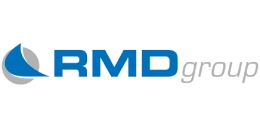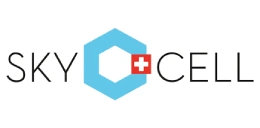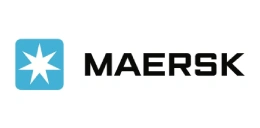Battery Cost Model: From Materials to Megawatts
_11zon.webp)
What is Battery?
A battery is an electrochemical energy storage system that transforms chemical energy into electrical energy by way of redox reactions between its electrodes and electrolyte. It consists of a single or multiple electrochemical cells, each having a positive electrode (cathode), a negative electrode (anode), and an electrolyte for ion transfer.
Key Applications Across Industries:
Batteries are categorically divided into primary (non-rechargeable) and secondary (rechargeable) types. Primary batteries, including alkaline and zinc-carbon, apply in low-drain applications, whereas secondary batteries like lithium-ion, lead-acid, nickel-metal hydride, and sodium-sulfur are rechargeable and continue to lead energy storage and mobility markets. Contemporary innovation has made the battery a key facilitator of the world energy transition. High-energy-density, lightweight, long-cycle-life lithium-ion batteries drive everything from phones to electric vehicles (EVs) and renewable energy storage systems. Advances in solid-state batteries, lithium-sulfur, and sodium-ion technologies are overcoming challenges in the areas of safety, cost, and raw materials shortages. Production is achieved through accurate electrode coating, cell assembly, electrolyte filling, and exhaustive safety testing to maintain consistency in performance. Batteries are increasingly essential building blocks in consumer electronics, automotive, industrial, and grid-scale applications, and are at the center of global sustainability and electrification objectives.
What the Expert Says: Market Overview & Growth Drivers
The global battery market reached a value of USD 138.7 Billion in 2024. According to IMARC Group, the market is projected to reach USD 306.9 Billion by 2033, at a projected CAGR of 8.3% during 2025-2033. The global battery industry is spurred by various macroeconomic and technological drivers related to electrification, sustainability, and energy security.
The primary driver is the widespread adoption of electric vehicles (EVs) due to automakers and governments driving decarbonization for the transport sector. EV sales reached over 17 million units in 2024, generating exponential demand for lithium-ion batteries. The second biggest driver is the expansion of renewable energy storage systems, wherein batteries stabilize power grids and back intermittent sources such as solar and wind. Government incentives and policy environments, e.g., the U.S. Inflation Reduction Act, the EU Battery Regulation, and China's NEV policy are triggering huge investments in gigafactories and local supply chains. Technological advancements are also driving market expansion at an accelerating rate, as innovations in solid-state and sodium-ion batteries are improving performance, safety, and cost. In parallel, growing use of batteries in consumer products, industrial automation, and telecom underpins steady baseline demand. Sustainability trends are encouraging recycling and second-life use of batteries, and for raw material recovery to minimize environmental footprint. Strategic partnerships among cell makers, automakers, and energy companies like CATL, LG Energy Solution, Panasonic, and Tesla are transforming the competitive dynamic. Together, these forces are driving the global battery market toward strong growth fueled by technological development and global momentum around electrification and carbon neutrality.
Case Study on Cost Model of Battery Manufacturing Plant:
Objective
One of our clients reached out to us to conduct a feasibility study for setting up a medium scale battery manufacturing plant.
IMARC Approach: Comprehensive Financial Feasibility
We developed a comprehensive financial model for the setup and operation of a proposed battery manufacturing plant in India. This plant is designed to produce 2.5 million units of batteries annually.
Manufacturing Process: The production process of the battery consists of a sequence of highly regulated electrochemical, mechanical, and assembly processes aimed at precision, consistency, and safety. It starts with the preparation of electrodes, which includes the cathode and anode materials, usually lithium compounds for the cathode and graphite for the anode for lithium-ion batteries, combined with binders and conductive additives in slurry form. This slurry is applied as a coating onto metal foils (aluminum for cathodes and copper for anodes) and dried in ovens to evaporate the solvents. The dried electrodes are calendared (compressed between rollers) to the desired thickness and density, then rolled or cut into sheets. After that, electrodes and a separator (a porous polymer film that stops short circuit while facilitating ion flow) are stacked or wound into cell structures like cylindrical, prismatic, or pouch configurations. The stacked cells are filled with an electrolyte, which serves as the medium for ion conduction, and sealed in moisture-controlled environments to avoid contamination. The encapsulated cells go through a very important stage known as formation, when they are charged and discharged under controlled conditions to stimulate the electrochemical materials and stabilize performance. After formation, the batteries are aged, tested, and sorted based on performance parameters such as capacity, voltage, and internal resistance. Then they are mounted into battery packs or modules, equipped with battery management systems (BMS) to monitor temperature, voltage, and charge cycles. Quality control, safety inspection, and international standard compliance (UL, IEC, BIS) guarantee that the completed batteries comply with the stringent dependability requirements for products varying from electric vehicles to energy storage systems.
_11zon.webp)
Get a Tailored Feasibility Report for Your Project Request Sample
Raw Material Required:
The basic raw materials required for battery manufacturing include:
- Battery Materials (Lithium, Nickel, Manganese, Graphite, Cobalt)
- Separator
- Electrolyte
- Copper
- Aluminum Foil
- Solvents
- Conductive Additives
- Binders
- Connectors
- Casing Materials
Machineries Required:
- Planetary Vacuum Mixer / High-Shear Mixer
- Slot-Die Coating Machine / Comma-Bar Coater
- Continuous Roll-To-Roll System
- Multi-Zone Hot Air-Drying Oven / IR Drying Furnace
- Calendaring Roll Press (Precision Rollers)
- Slitting Machine with Razor/Disc Cutters
- Z-Fold Stacking Machine
- Ultrasonic Welding Machine
- Punching/Notching Machine
- Pouch Forming Machine
- Electrode Insertion Machine
- Heat Sealing Machine
- Vacuum Electrolyte Filling System
- Formation Charger
- Cycling Tester
- Aging Chambers
- Battery Testing & Grading System (Capacity, Impedance, Self-Discharge Test)
- Protection Circuit Integration System (PCM (Protection Circuit Module)
- NTC (Temperature Sensor)
- FPC (Flexible Printed Connector)
- Spot Welding Machine
- Ultrasonic Sealer / Heat Shrink Wrapping Machine
- Labeling/Laser Marking Machine
Techno-Commercial Parameter:
- Capital Expenditure (CapEx): Capital expenditure (CapEx) in a manufacturing plant includes various investments essential for its setup and long-term operations. It covers machinery and equipment costs, including procurement, installation, and commissioning. Civil works expenses involve land development, factory construction, and infrastructure setup. Utilities such as power, water supply, and HVAC systems are also significant. Additionally, material handling systems, automation, environmental compliance, and safety measures are key components. Other expenditures include IT infrastructure, security systems, and office essentials, ensuring operational efficiency and business growth.
- Operating Expenditure (OpEx): Operating expenditure is the cost incurred to operate a manufacturing plant effectively. Opex in a manufacturing plant typically includes the cost of raw materials, utilities, depreciation, taxes, packing cost, transportation cost, and repairs and maintenance. The operating expenses are part of the cost structure of a manufacturing plant and have a significant effect on profitability and efficiency. Effective control of these costs is necessary for maintaining competitiveness and growth. Furthermore, raw material cost in a battery manufacturing plant ranges between 60-70%, labor cost ranges between 10% to 15%, and all other costs ranges between 15-30% in the proposed plant.
- Profitability Analysis Year on Year Basis: We assisted our client in developing a detailed cost model, which projects steady growth, with revenue rising throughout the projected period. Moreover, gross profit margins lie between a range of 15-20%, and net profit lie between the range of 5-10% during the income projection years, highlighting strong financial viability and profitability.
Conclusion & IMARC's Impact:
Our financial model for the battery manufacturing plant was meticulously developed to meet the client’s objectives, providing an in-depth analysis of production costs, including raw materials, manufacturing, capital expenditure, and operational expenses. By addressing the specific requirements of manufacturing 2.5 million units of batteries annually, we successfully identified key cost drivers and projected profitability, considering market trends, inflation, and potential fluctuations in raw material prices. This comprehensive financial model equipped the client with valuable insights into strategic decision-making, demonstrating our commitment to delivering high-quality, client-focused solutions that ensure the long-term success of large-scale manufacturing ventures.
Latest News and Developments:
- In July 2025, the Panasonic Group company Panasonic Energy Co., Ltd. declared that its new cylindrical lithium-ion battery manufacturing for electric vehicles (EVs) has officially opened. The facility is one of the biggest automotive battery plants in North America and is situated in De Soto, just outside of Kansas City, in the United States.
- In June 2025, LG Energy Solution opened its recently enlarged Holland, Michigan facility to the media, allowing them to observe how it has started manufacturing lithium-iron phosphate (LFP) batteries, which are thought by energy experts to be a vital part of America's sustainable future. These batteries are specifically made for large-scale energy storage. The new facility has an annual capacity of 16.5 GWh for LFP batteries.
- In December 2024, a joint venture between Stellantis and CATL has agreed to invest up to €4.1 billion to construct a large-scale European lithium iron phosphate (LFP) battery factory in Zaragoza, Spain. This announcement was made today. The battery factory will be constructed in phases and with various investment strategies, with the goal of becoming entirely carbon neutral.
Why Choose IMARC:
IMARC's Financial Model Expertise: Helping Our Clients Explore Industry Economics:
IMARC is a global market research company that offers a wide range of services, including market entry and expansion, market entry and opportunity assessment, competitive intelligence and benchmarking, procurement research, pricing and cost research, regulatory approvals and licensing, factory setup, factory auditing, company incorporation, incubation services, recruitment services, and marketing and sales.
Under our factory setup services, we assist our clients in exploring the feasibility of their plants by providing comprehensive financial modeling. Additionally, we offer end-to-end consultation for setting up a plant in India or abroad. Our financial modeling includes an analysis of capital expenditure (CapEx) required to establish the manufacturing facility, covering costs such as land acquisition, building infrastructure, purchasing high-tech production equipment, and installation. Furthermore, the layout and design of the factory significantly influence operational efficiency, energy consumption, and labor productivity, all of which impact long-term operational expenditure (OpEx). So, every parameter is covered in the analysis.
At IMARC, we leverage our comprehensive market research expertise to support companies in every aspect of their business journey, from market entry and expansion to operational efficiency and innovation. By integrating our factory set-up services with our deep knowledge of industry dynamics, we empower our clients to not only establish manufacturing facilities but also strategically position themselves in highly competitive markets. Our financial modeling and end-to-end consultation services ensure that clients can explore the feasibility of their plant setups while also gaining insights into competitors' strategies, technological advancements, and regulatory landscapes. This holistic approach enables our clients to make informed decisions, optimize their operations, and align with sustainable practices, ultimately driving long-term success and growth.
Our Clients
Contact Us
Have a question or need assistance?
Please complete the form with your inquiry or reach out to us at
Phone Number
+91-120-433-0800+1-201-971-6302
+44-753-714-6104










